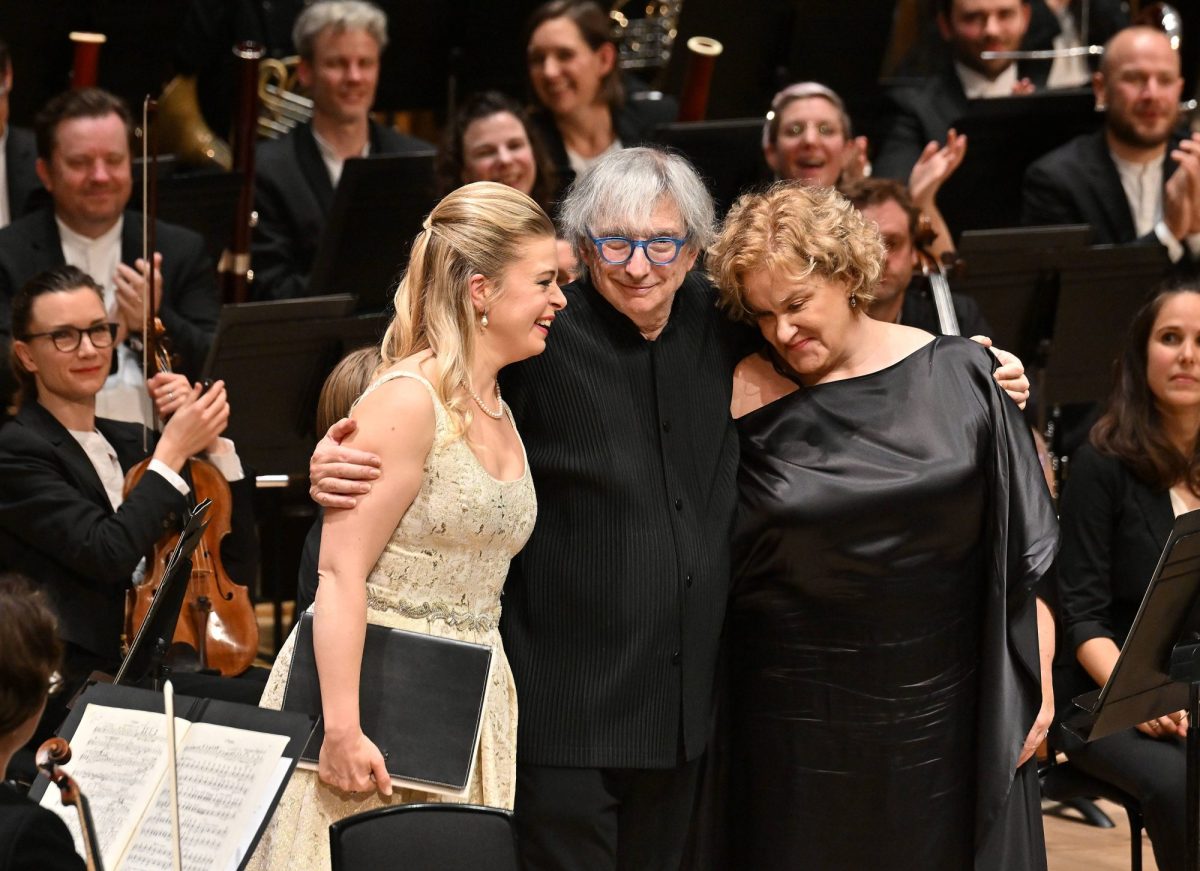Michael Tilson Thomas, LSO Conductor Laureate, received a very warm welcome from the capacity audience at the Barbican as he came on stage to conduct the London Symphony Orchestra in Gustav Mahler’s powerful Symphony No 2 in C Minor.
Concerts with MTT, as he is widely known, are always extra special and are now especially poignant given his three-year battle with brain cancer. This concert acknowledges his 80th birthday, coming up in December, and his ongoing relationship with the LSO that goes back more than five decades. MTT is also the Vice President of the London Symphony Chorus, which was also on stage, seated behind the players at the back of the stage.
The massed percussion formed the dividing line between orchestra and chorus. And, unusually, some of the musicians performed offstage, including four horns, four trumpets and three percussion.
Renowned internationally as a conductor, composer and pianist, with 12 Grammy Awards to his name, MTT has had an illustrious career and is acknowledged as a dedicated Mahlerian. It was clear in this performance that the musicians shared a deep affection and respect for this most notable conductor.
Like many Mahler compositions, this is a huge work in form, scope and scale. Mahler’s symphonies are replete with intense emotions and grand ideas – love and hate, the joy of life and the fear of death, the beauty of nature – and all juxtaposed against innocence and bitter experience. His first composition, written when he was 10, was a funeral march with polka. Six of his 13 siblings had died young, so perhaps he was more familiar with funerals than most 10-year-olds. Mahler enrolled at the Vienna Conservatorium at 15 to study piano and there took up conducting and composing.
More usually known as the Resurrection Symphony, given the eternal question that informs the text, this is a monumental work for full orchestra, two solo singers and the vast chorus; indeed the Barbican stage had been extended forward just to accommodate them all.
Looking surprisingly sprightly, MTT began with a witty aside to the orchestra and then got straight into the business of the magnificent first movement. The LSO, under enthusiastic leader Benjamin Gilmore, gave full force to the complex score while still giving air to the lighter moments. This mighty opening movement is big and bold and musically chaotic as it reminds us of our fate – only death lies ahead. And just as you thought it was ending, the orchestra burst into another fulsome flourish. Some especially fine work from the eight upright basses formed much of the backbone.
Mahler originally recommended a break of five minutes between the first and second movements, no doubt to allow the players and audience alike to catch their breath. MTT held a rather shorter pause and then eased into the gentler second movement. There is a quite different quality to this movement; it’s almost dream-like with faint echoes of folk song elements and hints of a genteel country dance. The mood changes again in the third, and although designated ‘calmly flowing’, it’s more torrid than one may expect.
Guest mezzo-soprano Alice Coote OBE stood for the fourth, giving a considered reading of the text as she sang of life’s end. “Even more would I rather be in heaven,” sounds even more pained sung in German. Acclaimed as a star across both operatic and concert stages, Coote is regarded as one of the great singers of our time.
She shared the vocal parts with Australian soprano Siobhan Stagg who has already gained an international reputation as an in-demand artist. Back home in Australia, she received the Key to the City for her achievements in the arts from the Mayor of Mildura in 2023. She was only the third person to be granted the honour in the history of this small Victorian city.
Mahler always knows how to end a symphony and this one does not disappoint. The fifth movement is a roller-coaster, described in the score as ‘scherzo tempo: in a wild outburst’ and so it is, culminating in massive brass and an outpouring of gongs and drums and bells. The organ and the harps burst out, the bells ring, the trumpets proclaim the resurrection, and the orchestra calls out in all its passion and vigour as the singers proclaim “yea, thou will rise again … what thou hast fought for shall lead thee to God!”
Read: Don’t miss in October – your monthly guide to the brightest and best arts in London
There is indeed a deep religiosity to much of Mahler’s work. Born into a Jewish family, he later became a Roman Catholic. The fear of mortality and belief in resurrection is at the very heart of this work.
The sheer scale of the Second means it is not performed live as often as the other Mahler symphonies. MTT conducted with understated gestures, a glance or a flick of the finger as much as the baton, and the combined music-makers on stage gave their all in return. It was a delight and extra special to share the moment with this most-loved conductor.
Gustav Mahler, Symphony No 2 Resurrection, London Symphony Orchestra
Conductor: Michael Tilson Thomas
Mezzo-soprano: Alice Coote
Soprano: Siobhan Stagg
London Symphony Chorus
Resurrection played at the Barbican Sunday 20 October and will be performed on Wednesday 23 October.





